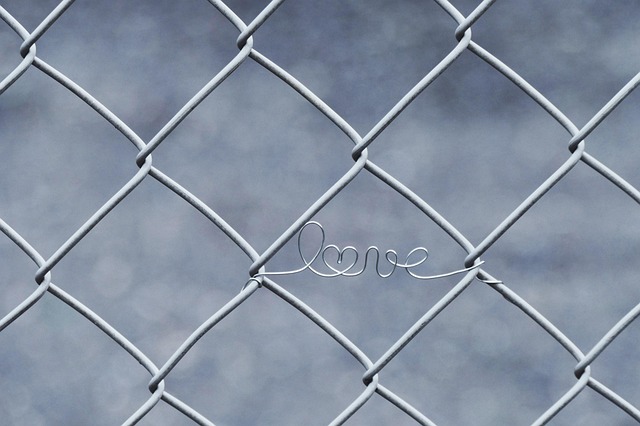Cost-Effective Fencing Solutions for Large Properties: Securing Your Space Without Breaking the Bank
Managing a vast property presents unique fencing challenges. This article explores cost-effective solutions tailored to large-scale needs, addressing both aesthetic considerations and functional requirements. We delve into diverse options, from traditional materials facing limitations to innovative, eco-friendly alternatives. By examining DIY installations, longevity strategies, and natural barriers, homeowners can find affordable ways to secure their properties while enhancing their outdoor spaces.
- Understanding Fencing Needs for Large Properties
- Traditional Fencing: Costs and Limitations
- Cost-Effective Alternatives: A Comprehensive Look
- Natural Barriers: The Eco-Friendly Option
- DIY Solutions: Saving on Installation Costs
- Longevity and Maintenance: Ensuring Value Retention
Understanding Fencing Needs for Large Properties
Fencing large properties presents unique challenges compared to smaller plots. The primary considerations shift from purely aesthetic appeal to functionality, security, and cost-effectiveness. Property owners must assess the purpose of the fence—be it for privacy, livestock containment, or boundary demarcation—and choose materials and designs accordingly.
The scale of large properties demands durable yet cost-efficient solutions. Options like traditional wood fencing can be aesthetically pleasing but may require frequent maintenance. Alternatively, chain link fences offer a more economical choice, especially for expansive areas, while providing adequate security. Additionally, modern fence styles like vertical slat or decorative metal fences can blend functionality with an attractive design, suiting both rural and suburban settings.
Traditional Fencing: Costs and Limitations
Traditional fencing materials like wood and vinyl can be expensive, especially for large properties. The cost of these materials can significantly increase with property size due to the vast amounts required. Moreover, maintenance is a constant worry; rot, pest infestations, and fading colors require regular treatment, adding more expenses over time.
While aesthetically pleasing, traditional fences have limitations in terms of durability and longevity. They are susceptible to weather conditions, leading to potential damage and the need for frequent repairs or replacements. This not only incurs financial costs but also causes inconvenience and can disrupt the overall landscape design.
Cost-Effective Alternatives: A Comprehensive Look
When considering fencing for large properties, opting for cost-effective alternatives can significantly reduce expenses without compromising quality and durability. Traditional fencing materials like wood and steel can be expensive, especially for extensive runs. However, there are numerous affordable options available that offer comparable aesthetics and functionality.
One such alternative is vinyl fencing, which has gained immense popularity due to its low maintenance and long-lasting nature. Vinyl is highly versatile, allowing for a range of styles and designs to suit different preferences and landscape needs. Additionally, composite materials made from a mix of wood and plastic are another sustainable choice, offering the natural look of wood with enhanced durability and resistance to rot and pests. These options provide both visual appeal and financial savings, making them ideal choices for large-scale fencing projects.
Natural Barriers: The Eco-Friendly Option
Natural barriers offer an eco-friendly and aesthetically pleasing fencing solution for large properties. Instead of traditional wooden or metal fences, property owners can opt for natural features like trees, hedges, or stone walls to define their boundaries. Planting native shrubs and trees not only provides privacy but also supports local ecosystems by attracting wildlife and contributing to biodiversity.
These organic barriers require minimal maintenance compared to synthetic fencing, making them a cost-effective option in the long run. They can also be designed to suit various property styles, from rustic country homes to modern urban retreats, seamlessly integrating with the natural landscape. By choosing natural barriers, property owners can reduce their environmental impact while enhancing the beauty and value of their large properties.
DIY Solutions: Saving on Installation Costs
Many homeowners looking to fence large properties often face significant installation costs. However, DIY (Do-It-Yourself) solutions offer a cost-effective alternative that can save substantial amounts of money. By taking on the project yourself, you eliminate the labor expenses typically associated with professional installers. This approach is especially beneficial for those with basic construction skills and a willingness to invest time in planning and execution.
There are various DIY fencing kits available in the market, designed for different styles and materials. These kits come with all the necessary components, cutting and assembly instructions, and sometimes even online tutorials. Concrete posts, wood panels, and chain-link fences are popular choices among DIY enthusiasts due to their affordability and ease of installation when following the right steps and guidelines.
Longevity and Maintenance: Ensuring Value Retention
When considering fencing solutions for large properties, longevity and maintenance should be top priorities to ensure value retention over time. A durable fence can withstand harsh weather conditions, prevent damage from wildlife or intrusions, and maintain its aesthetic appeal for years. Investing in high-quality materials and construction techniques is key; metal or vinyl fences, for instance, offer superior resistance to rot, rust, and deterioration compared to wood.
Regular maintenance plays a crucial role in extending the life of your fence. Simple tasks like cleaning, repainting, or resealing can significantly delay the need for costly replacements. Some materials require minimal upkeep, while others might demand more attention. Understanding the specific care needs of your chosen fencing material is essential for keeping your large property well-protected and aesthetically pleasing.
